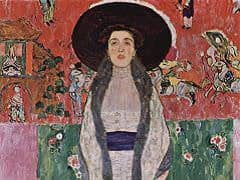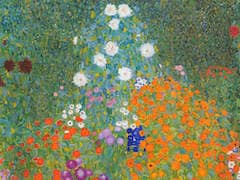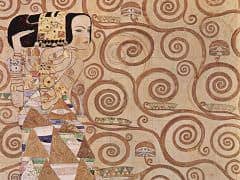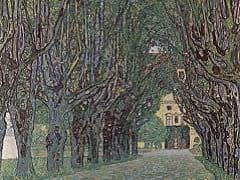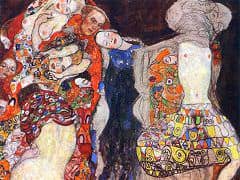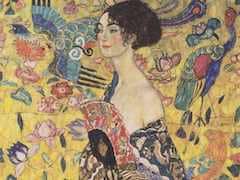Love, 1895 by Gustav Klimt

Klimt's second portfolio of work for Gerlach's Allegories and Emblems included a representation of Love, for which this painting was the model. Rather than a simple depiction of a pair of lovers,
Klimt has broadened the context to include a wider picture of the world. The two central figures, who are almost like actors on a stage, are watched by female heads personifying youth, old age and death,
symbolizing the inexorable transitoriness of life and love. In many of his subsequent paintings, Klimt used the female figure in this allegorical and symbolic fashion.
A striking development in Klimt's work is seen here for the first time: the use of the frame. Nearly half of the picture is made up of the wide, painted frame on either side, creating a picture within
a picture. Klimt has painted onto it naturalistic roses, which serve as a prelude to the painting proper, in that they provide a visual link between the realistic treatment of the figures and the flat
colour of the frame. The roses' beauty and their romantic associations also allude to the lovers themselves.







